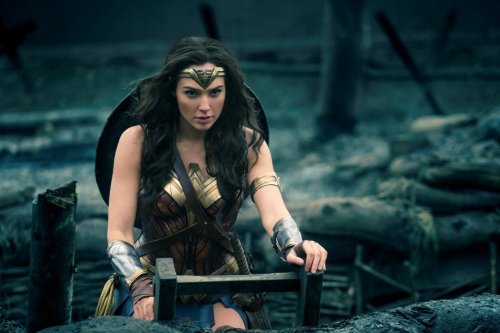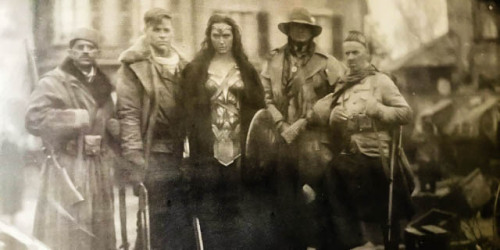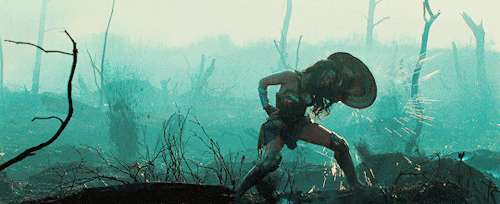
"THE CHISHOLMS" (1979): CHAPTER I Commentary
Years ago, before the advent of DVDs, I had perused my local video rental store for something to watch. I came across a miniseries called "THE CHISHOLMS". Due to it being a Western and possessing a running time of four hours and thirty minutes, I decided to give it a chance. I managed to purchase a VHS copy of the miniseries and enjoy for several years. But with the advent of the DVD and my VHS player going on the blink, I had to wait quite a while before I could finally get a DVD copy of it.
Based upon Evan Hunter's 1976 novel, "THE CHISHOLMS" told the story of a family from western Virginia, who make the momentous decision to travel west to California after losing part of their farm to a neighbor, due to some unusual circumstances. Unlike many other television and movie productions about the westward migration during the 1840s, "THE CHIISHOLMS" took its time in setting up the story. In this first episode, it spent at least an hour introducing the Chisholm family - namely:
*Hadley Chisholm - the family's patriarch and owner of a farm in western Virginia
*Minerva Chisholm - the family's matriarch
*William "Will" Chisholm - Hadley and Minerva's oldest son, who is also a veteran of the Texas Revolution
*Gideon Chisholm - Hadley and Minerva's second son
*Bonnie Sue Chisholm - Hadley and Minerva's older daughter and Beau's twin
*Beau Chisholm - Hadley and Minerva's youngest son and Bonnie Sue's twin
*Annabel Chisholm - Hadley and Minerva's younger daughter and youngest offspring
The first episode or Chapter I began with Will's wedding to a young local woman named Elizabeth during the spring of 1843. Also, the family is unaware of Bonnie Sue's romance with a young man named Brian Cassidy. Unfortunately for her and Brian, the Chisholms and the Cassidys have been engaged in a feud ever since Hadley's brother had rejected Brian's aunt at the wedding altar several decades ago. When the latter died, the Chisholms and the Cassidys discovered that she had received a portion of the Chisholm land - the farm's most fertile - from Hadley's brother as compensation for being dumped. She never revealed this to her family or the Chisholms. But she did leave her land to her brother and Brian's father, Luke Cassidy, who did not wait long to demand that the Chisholms hand over the land. Matters worsen for the Chisholms when Will's bride die from an infection after giving birth to an unborn child.
With no fertile land to farm, Hadley Chisholm decides to pack his family and migrate to California. Most of the family agrees with his decision, except Minerva, who is reluctant to leave Virginia; and Bonnie Sue, who is reluctant to leave Brian. The journey west goes without a hitch, until the family reaches Louisville, Kentucky. There, they discover from a young Western guide named Lester Hackett that they had departed Virginia at least a month or two late for the journey to California. The family had reached Louisville in mid-May 1844, around the time when most emigrant wagon trains usually departed Independence, Missouri. Upon learning this, Hadley changes his mind about the journey to California and decides to return to Virginia. But Will informs him that there are other members of the family are willing to utilize Lester's plan that would eliminate some time from their trip to Independence. After the Chisholms decide to continue west via a family vote, they utilize Lester's plan by boarding a flat-bottom boat that takes them to Evansville in western Indiana, cutting off their journey by a few weeks.
Some people might find the first hour of "THE CHISHOLMS" rather hard to endure. Most movie and television productions usually spend at least fifteen minutes in introducing its characters and conveying the reasons behind their decision to migrate to the West."THE CHISHOLMS" spent an hour. Personally, this did not bother me, for I found the circumstances behind the Chisholms' decision to head for California rather interesting. Especially since the circumstances involved a potential feud with another family. Other reasons why I rather enjoyed the miniseries' first hour was how the circumstances in which the family made its departure originated with Hadley Chisholm's displeasure over the neighborhood's new minister from Vermont and how the latter conducted Elizabeth Chisholm's funeral. I would explain how Hadley's conflict over the new minister led to the family sneaking away from their home in the middle of the night. But it would require a great deal of narration on my part. And honestly, I would suggest that you simply watch the miniseries.
Once the family hit the road for California, the miniseries went into full steam. Chapter I only followed the Chisholms from Virginia to southwestern Indiana, but a good deal happened in that half hour. The temptation to return home to Virginia hovered over the family all the way to Louisville. And when the family learned from Lester Hackett that they had left Virginia about a month or so too late, even Hadley was tempted to turn around. What I found interesting about this turn of events is that Chisholms' decision on whether to return to Virginia or continue west to California depended upon a family vote . . . and the instant attraction between Bonnie Sue Chisholm and Lester. Personally, I would have ended Chapter I with that scene inside a Louisville stable. Hadley and Minerva's willingness to decide the whole matter on a vote, along with the sexual attraction between Bonnie Sue and Lester, would end up producing strong consequences later in the miniseries and in the short-lived television series that followed. Instead, the Chisholms experienced a brief journey down the Ohio River on a broad horn (flat-bottom raft), while Minerva endured the unwanted attention of the broad horn's captain (or patroon) named Jimmy Jackson. By the time the family reached the outskirts of Evansville, it had reached the point of no return.
Another aspect about "THE CHISHOLMS" that I enjoyed, was how the producers, director Mel Stuart and the screenwriters utilized the production's historical background without hitting viewers over the head with facts. The family had departed Virginia in 1844, a year that featured a Presidential election. Not once did the topic of the election graced anyone's lips. But the miniseries made it clear that Will Chisholm was a veteran of the Texas Revolution of 1836. The miniseries also brought up the topic of slavery. The narrative pointed out that Hadley's wealthiest neighbor was a planter and slave owner. And during the last half hour of Chapter I, a coffle of slaves was among the other passengers aboard Jimmy Jackson's broad horn, leading Minerva Chisholm to express anti-slavery sentiments. I also enjoyed how the miniseries gave television viewers a lengthy peek into life in the early-to-mid 19th century Appalachia. I have always admired Aaron Copeland's score for the miniseries. But I must admit that his score contributed to this episode's first hour, which featured the Chisholms' life in western Virginia.
Most of the production's historical background seemed to revolve around the family's westward journey. Unlike many Hollywood productions, television viewers did not see the Chisholms' wagon being pulled by horses (which is historically inaccurate). And the narrative went out of its way to point out that the family began its westbound journey about a month or two late. I also enjoyed the brief montage that featured the Chisholms' early start on the journey and what it took for them to maintain supplies and keep their wagon in condition. Steven P. Sardanis's production designs, the art direction that he provided with Fred Price, Charles Korian and Charles B. Price's set decorations, and Tom Costick's costumes (to a certain extent), did a great job in re-creating western Virginia and the Ohio River Valley circa 1844.
But in the, the cast proved to be the best thing about "THE CHISHOLMS". I must commend casting director Vicki Rosenberg for gathering a first-rate collection of performers for the cast. The miniseries featured solid performances from Dean Hill, Jack Wallace, Maureen Steindler, Tom Taylor, James O'Reilly and Gavin Troster; even if they did not exactly rock my boat. Glynnis O'Connor gave a charming performance as Will's young wife, Elizabeth Chisholm. Anthony Zerbe gave a spotless performance as the sleazy flat boat patroon, Jimmy Jackson. But the one supporting performance that caught my eye came from Charles Frank, who gave the first of a series of dazzling performance as the charmingly ambiguous Lester Hackett.
Rosenberg casting of the Chisholm family proved to be even more impressive to me. Susan Swift gave a very charming and balanced performance as the family's youngest member, Annabel Chisholm, who seemed divided between the adventure of migrating to California and being mindful of her mother's reluctance to move. James Van Patten gave a very energetic and intense performance as the family's hot-tempered member, Beau Chisholm. Stacy Nelkin's portrayal of the sensual, yet pragmatic Bonnie Sue Chisholm struck me as very skillful, which is why her performance was one of my favorites in the series. Brian Kerwin, whom I remember from the 1982 miniseries, "THE BLUE AND THE GRAY", seemed a bit laid back as middle son, Gideon Chisholm. But he gave a charming performance in the end. Ben Murphy portrayed the oldest sibling, Will Chisholm. And I thought he did a great job in revealing how Will seemed to be an interesting combination of his parents. I was especially impressed by how he handled Will's grief over Elizabeth's death.
Years after I had first seen "THE CHISHOLMS", I was surprised to learn that the two leads - Robert Preston and Rosemary Harris - had first worked together on the 1966 Broadway play, "THE LION IN THE WINTER". I do not if having them reunite for the 1979 miniseries was Rosenberg or someone's idea, but it was a damn good one, all the same. What can I say? Whatever magic Preston and Harris had created on Broadway back in the mid-1960s, they managed to re-create it front of the television camera some 12 to 13 years later. In some ways, the pair seemed like the yin and yang of the Chisholm family. They were so perfect together that I do not know how else to describe their performance.
Before I end this article, I must admit there were one or two aspects of "THE CHISHOLMS" that either did not impress me or . . . confused me. Although I believe that Tom Costick's costumes added to the production mid-1840s setting . . . but only to a certain degree. It did seem that a great deal of Costick's costumes looked as if they had come out of a Hollywood warehouse, instead of being created by him. Especially the women's costumes. Even those costumes worn by well-to-do women in the Louisville sequence gave that impression. And I am a little confused about the circumstances surrounding Hadley's loss of his most fertile cornfield. I understood how he lost the actual land to Luke Cassidy. What I did understand was how Cassidy managed to take possession of the corn that the Chisholm family had already sown. Surely the court would have allowed the Chisholms to profit from the corn sown from seeds purchased by them? If someone could clear this matter for me, please do so.
Despite my quibbles regarding the costumes and the matter surrounding the cornfield lost to the Chisholms, I enjoyed Chapter I of "THE CHISHOLMS" very much. In fact, watching it reminded me why it had become one of my favorite miniseries in the first place. Why on earth did I wait so long in watching it again? Oh well . . . on to Chapter II.



















































